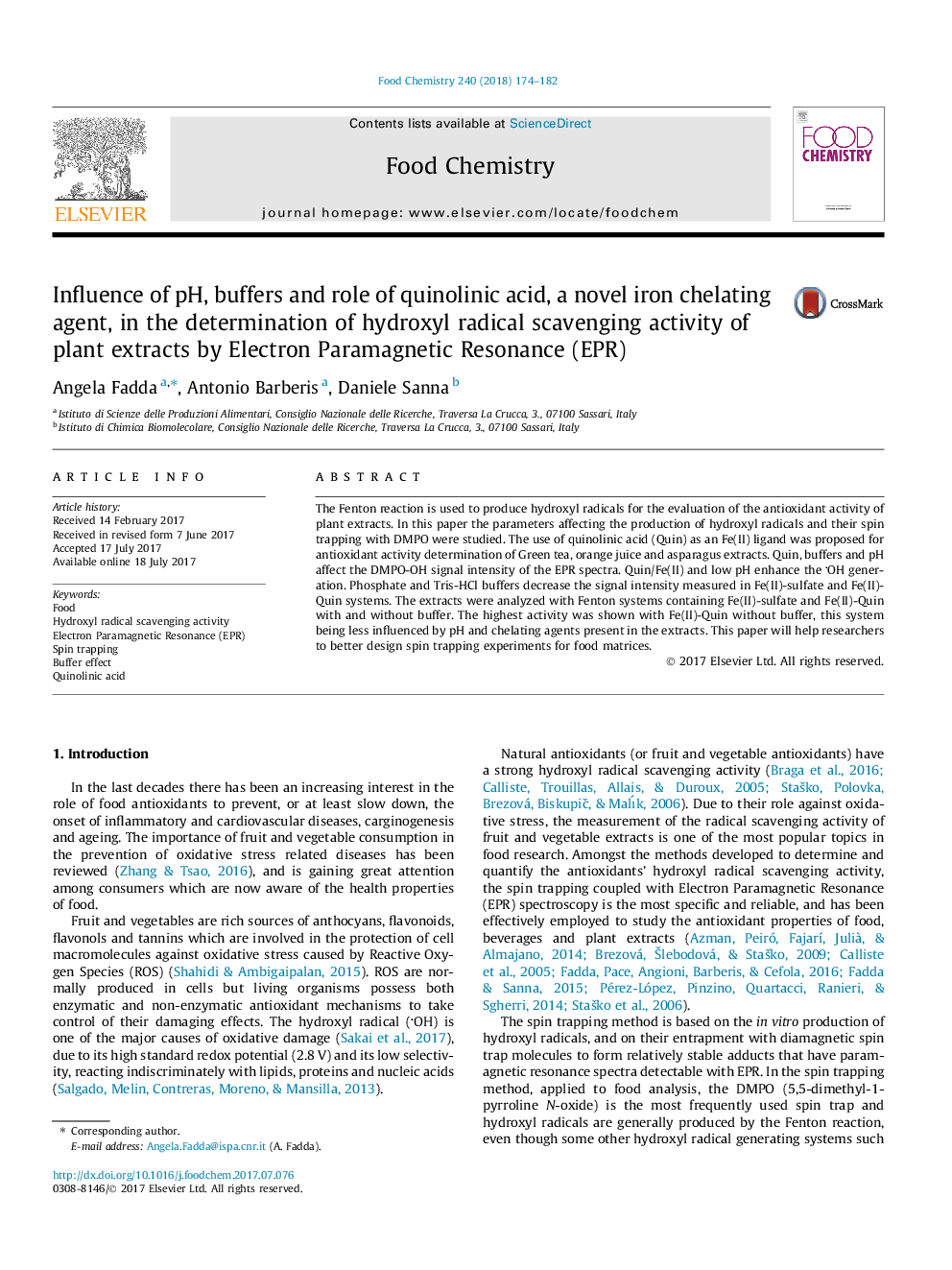| Article ID | Journal | Published Year | Pages | File Type |
|---|---|---|---|---|
| 5132454 | Food Chemistry | 2018 | 9 Pages |
â¢In the Fenton reaction pH and buffers affect the DMPO-OH signal intensity.â¢The DMPO concentration affects the DMPO-OH adduct signal intensity.â¢Fe(II)-Quin overcomes the pH effect and allows for lower DMPO concentration.â¢Food extract analysis show different results depending on the reaction system.â¢Fe(II)-Quin system is less influenced by the extracts composition.
The Fenton reaction is used to produce hydroxyl radicals for the evaluation of the antioxidant activity of plant extracts. In this paper the parameters affecting the production of hydroxyl radicals and their spin trapping with DMPO were studied. The use of quinolinic acid (Quin) as an Fe(II) ligand was proposed for antioxidant activity determination of Green tea, orange juice and asparagus extracts. Quin, buffers and pH affect the DMPO-OH signal intensity of the EPR spectra. Quin/Fe(II) and low pH enhance the OH generation. Phosphate and Tris-HCl buffers decrease the signal intensity measured in Fe(II)-sulfate and Fe(II)-Quin systems. The extracts were analyzed with Fenton systems containing Fe(II)-sulfate and Fe(II)-Quin with and without buffer. The highest activity was shown with Fe(II)-Quin without buffer, this system being less influenced by pH and chelating agents present in the extracts. This paper will help researchers to better design spin trapping experiments for food matrices.
